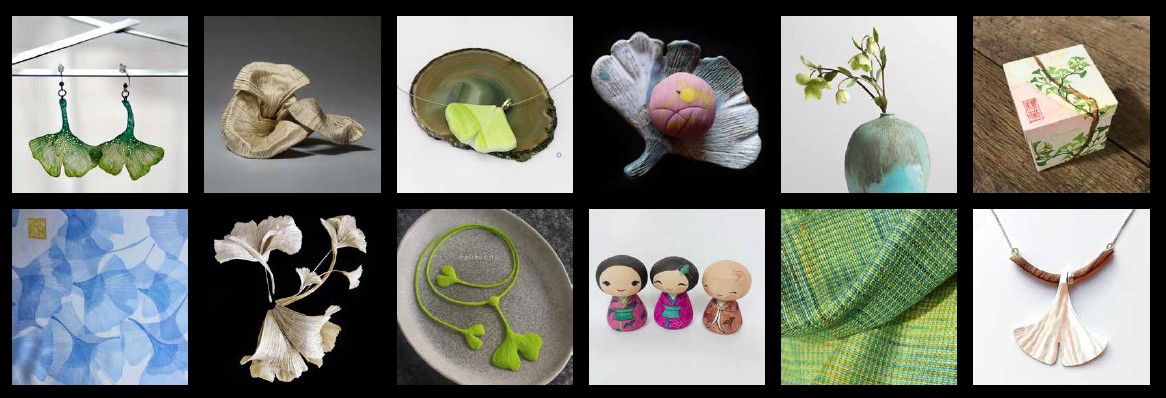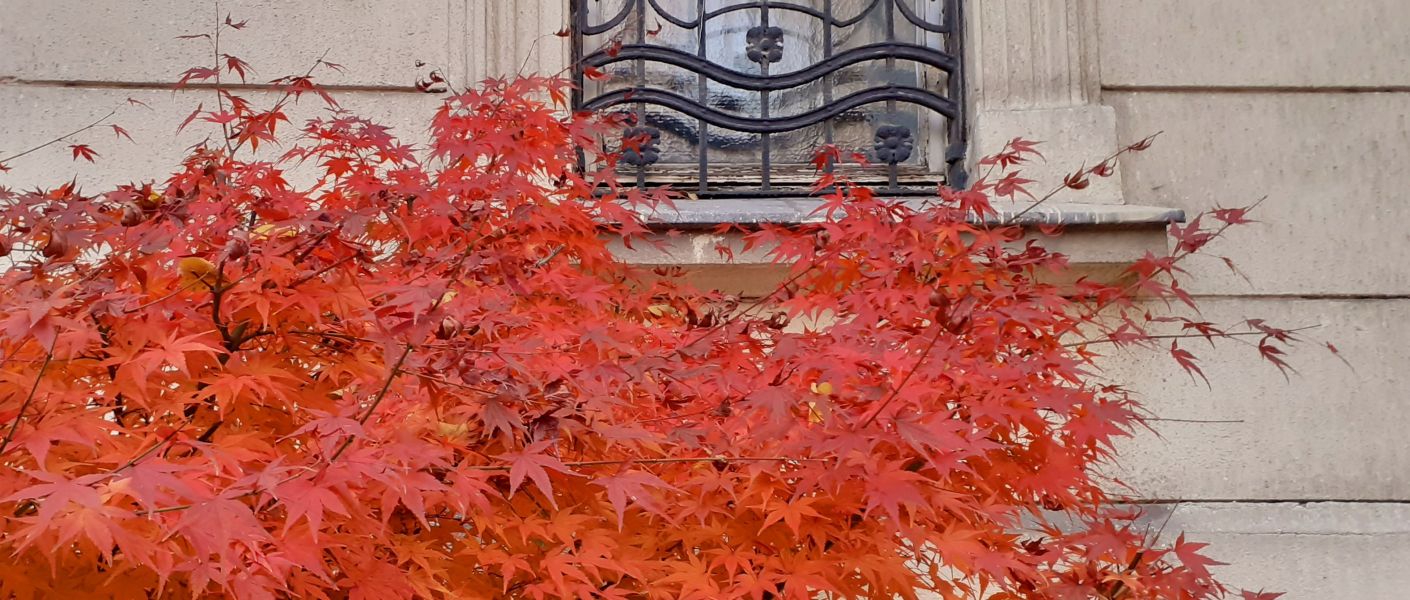GINKGO | MOMIJI | DESIGN
"A hundred-year-old landscape
In the garden
Fallen leaves."
Haiku by Matsuo Bashô (1644-1694) © Takafumi Saito & William R. Nelson
For a day, the oriental garden of Hopp Museum will be filled with beautiful works of applied art created in autumn tune, inspired by Asian plants, with motifs of ginkgo and momiji leaves.
EXHIBITING ARTISTS:
- Kinga Balogh jewelry designer (CIRRHOPP)
- Anikó Boros felt artist (Baribon – Felted nature)
- Kinga Földi textile artist (Baharat)
- Anikó Gyetvai textile artist (Mulberry Leaf)
- Ildikó Holes-Csabák jewelry designer (website)
- László Illés ceramist (Illés László Ceramics)
- Györgyi Mátyók jewelry designer (website)
- Kornélia Rajzó-Kontor, Urasenke tea master and wagashi artist
- Flóra Szarka silk painting textile artist (Flora in silk)
- Tünde Szentgyörgyi paper designer (Papír & Design Manufaktúra)
- Réka Tóth-Vásárhelyi kokeshi artist (Katagami Kokeshi)
These two trees can be found in Hopp Museum’s garden as well: the ginkgo is the only plant dating back to the time of Mr. Ferenc Hopp, the founder of our museum. Ginkgo, a botanical miracle, a more than 200 million years old living fossil, is the holder of the secret of eternal life, besides, the sacred tree in monastery gardens of East Asia. Its bright, golden leaves dress the gardens in festive colors during autumn leaf fall. The Japanese maple is also a popular ornamental tree, its color gradually changes from green to purple in autumn. The viewing of colorful leaves is a special holiday in Japan. The maple leaf has long been a popular decorative motif in art: it often appears on textiles, lacquerware, and woodcuts. Hopp Museum’s garden is a place to experience pure aesthetics, an exquisitely fine-tuned harmonious environment, an island of tranquility in the middle of the bustling city. The works of art on display reflect plants cultivated in the garden, they are thematically connected, and, in a way, represent a sort of close-to-nature design.
The following related programs accompany the art show and fair:
10:00 a.m. – 12:00 p.m.: Leaves made of paper. Origami workshop led by Ágota Nedev, a member of the Hungarian Origami Circle
2 p.m. – 3 p.m.: Sounding zen. Japanese bamboo flute (shakuhachi) presentation and instrumental meditation. The program is led by Dr. László Kenéz, lecturer at he Dharma Gate Buddhist College
The sound of the sakuhachi, the Japanese bamboo flute, evokes Japan immediately. However, this globally known and popular instrument is not of secular origin: it originated in monasteries a few hundred years ago as a tool of Zen Buddhist practice. We can rightly ask: how can a musical instrument be a meditation tool? Artistic activity and religious practice are not oppositional qualities? In addition to gaining insight into the world of this special instrument, those interested, will be able to answer these questions based on their own experiences.
3 p.m. – 4:30 p.m.: Momiji walk in the garden with Zita Gódorné Hazenauer, Japanese garden expert, and landscape designer

Special ticket price applies for this event: 1500 HUF
Free for children aged between 0 and 5 years.
Ticket is also valid for the exhibition on the day of the programme.
